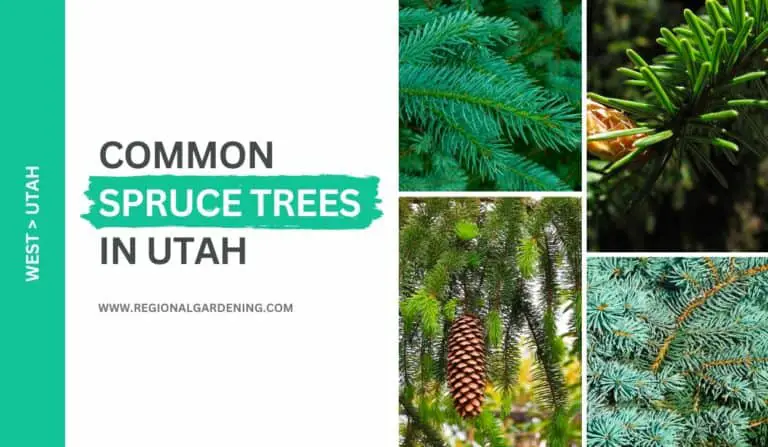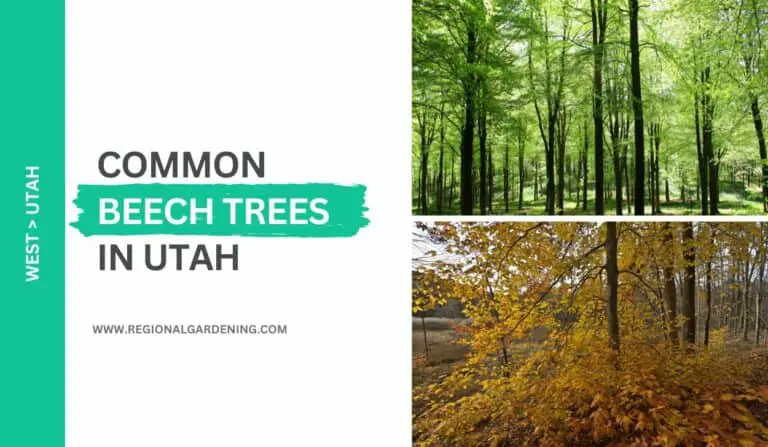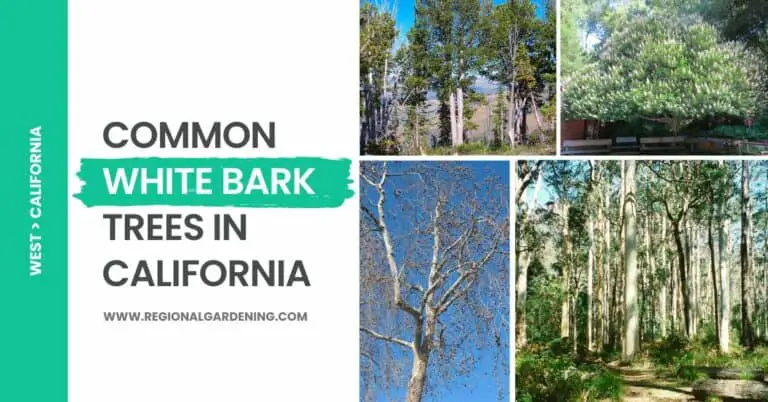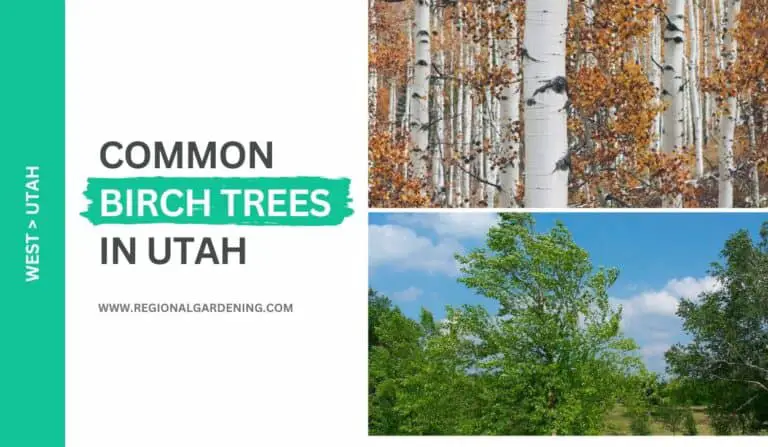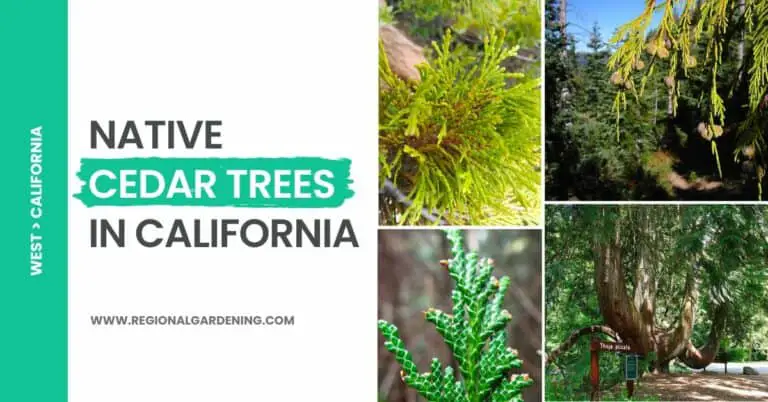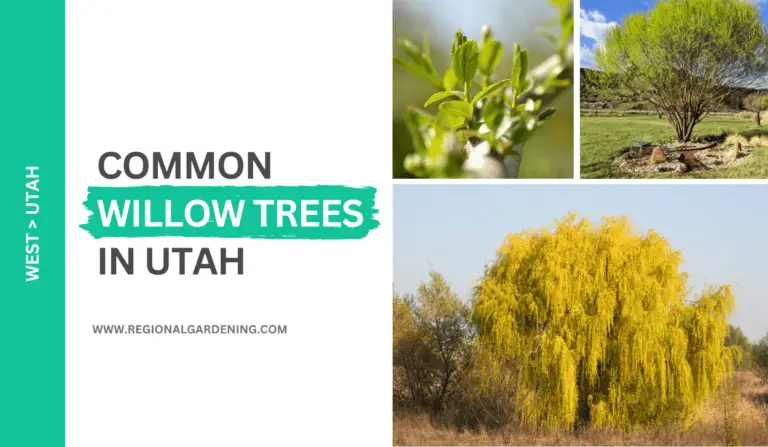2 Mulberry Trees In Utah (Photos & Identification)
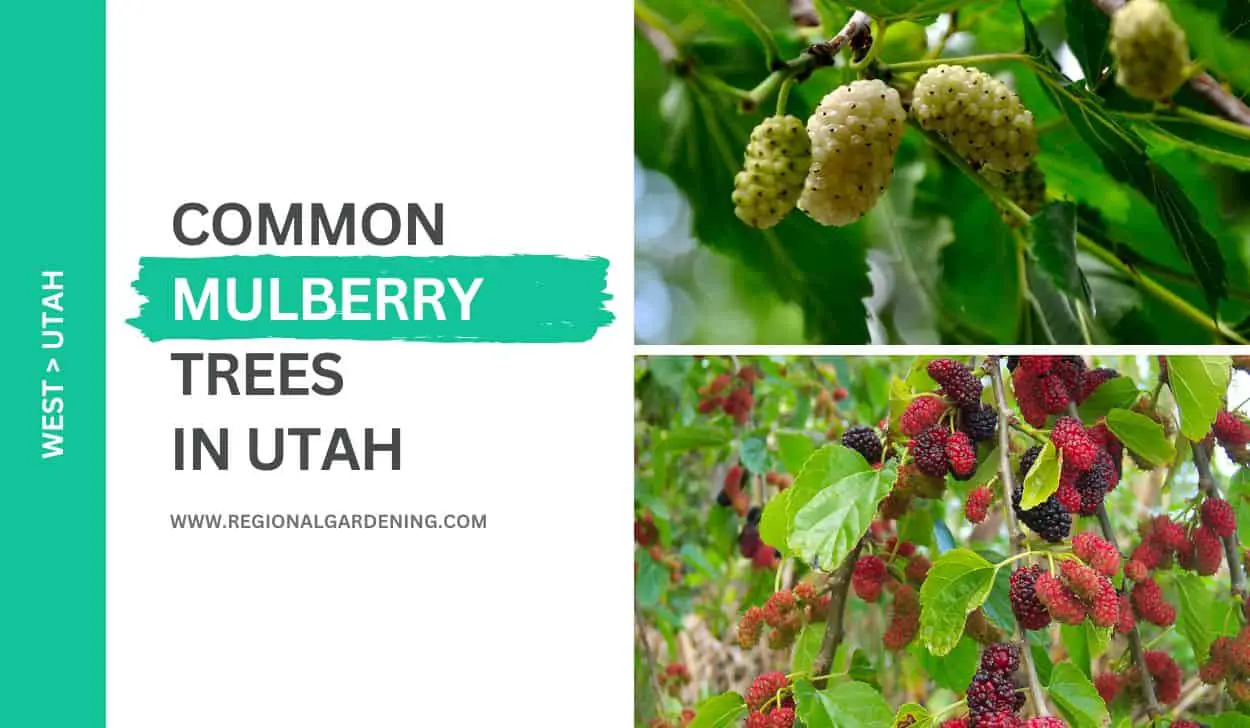
Mulberry trees are not widely planted throughout the United States. While they can be found in a variety of locations, their distribution is limited when compared to other tree species. Mulberry trees are more common in certain parts of the country due to favorable climate and growing conditions.
So, are there mulberry trees in Utah? And how common is it?
There are two types of mulberry trees in Utah, but they are not commonly found. Furthermore, none of these varieties are native to the state.
This article describes two of those varieties in detail so that you can quickly identify and grow them if necessary.
So, let us get started.
1. White Mulberry
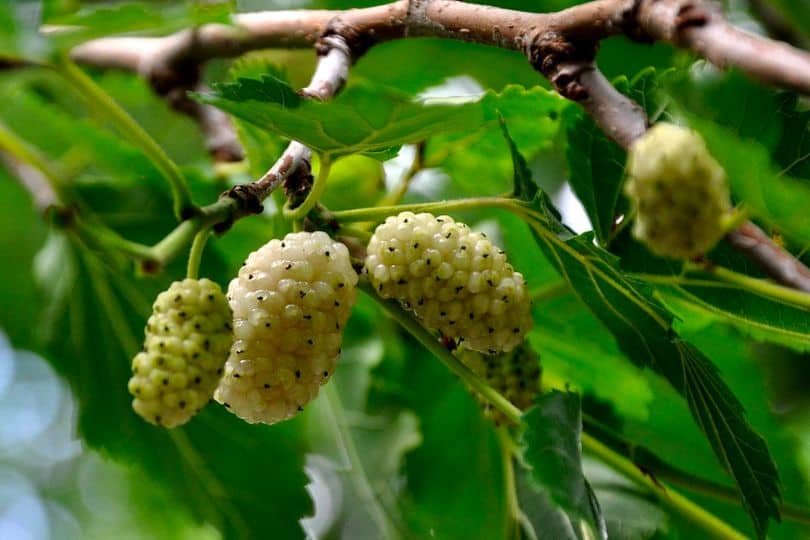
- Common Name: White Mulberry
- Scientific Name: Morus alba
- Mature Height: Up to 40-70 feet
- Native/Non-Native: Non-native
- Flowers/Cones: Small, inconspicuous flowers
- Uses: Ornamental, Juicy berries
The White Mulberry (Morus alba) is a beautiful and unusual mulberry tree found in a few places in Utah. This deciduous tree has various distinguishing characteristics that make it a noteworthy contribution to the local landscape.
Large, heart-shaped leaves with serrated edges characterize the White Mulberry. During the growing season, these leaves are usually glossy and brilliant green, giving the plant a rich and appealing appearance. They often turn yellow before falling in the autumn, bringing a touch of warm color to the surroundings.
The White Mulberry produces little, inconspicuous greenish-yellow blossoms in the spring. Although these flowers are not extremely attractive, they are high in nectar and attract a variety of pollinators, including bees and butterflies.
The White Mulberry’s bark is light gray and becomes somewhat rough as the tree matures. The wood is recognized for its durability and has previously been used to make furniture, tools, and even musical instruments.
The fruit of the White Mulberry tree is one of its most prominent features. When ripe, the fruits are small, elongated, and usually white, though they can also be pink or purple. Both humans and wildlife enjoy the luscious, juicy berries. They can be eaten fresh or used to make jams, jellies, and sweets.
The White Mulberry, which is native to eastern and central Asia, has been cultivated and naturalized in many parts of the world, including sections of the United States. It is commonly found in open settings like fields, meadows, and disturbed regions.
The White Mulberry’s scarcity adds to its attractiveness in Utah. While it is not as prevalent as other tree species, it may be a beautiful addition to the environment, giving shade, aesthetic appeal, and an abundance of tasty fruits. Its adaptability to a variety of soil types and drought endurance make it a tough decision for gardeners and tree aficionados looking for a one-of-a-kind and rewarding addition to their Utah environment.
2. Red Mulberry
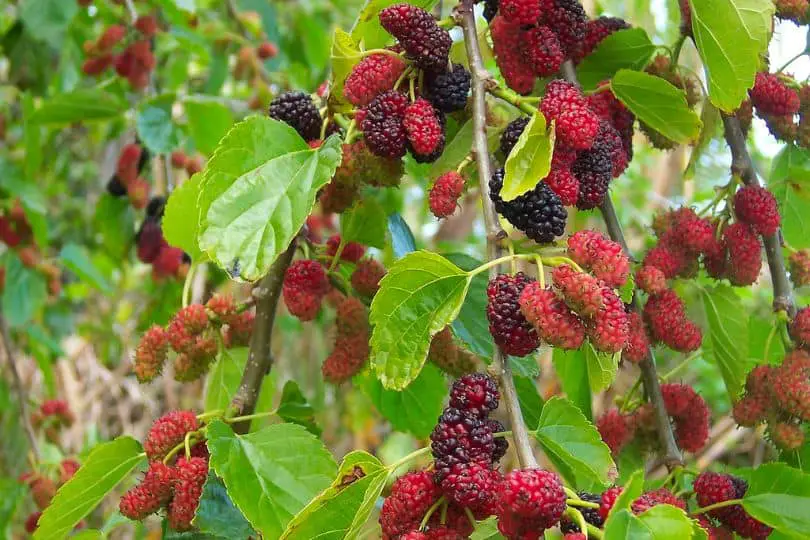
- Common Name: Red Mulberry
- Scientific Name: Morus rubra
- Mature Height: Can grow up to 40-60 feet tall
- Native/Non-Native: Native to most of the eastern U.S.
- Flowers/Cones: Flowers are small and inconspicuous, with no petals.
- Uses: Red Mulberry trees are commonly used for firewood due to their excellent burning properties.
Because of its heat tolerance and quick growth, the Red Mulberry, a native tree of the eastern United States, is well-suited for metropolitan environments. It can grow to be 40-60 feet tall and is usually found in fertile, damp areas.
This tree is notable for its alternating and simple leaves that are virtually orbicular and measure 3-5 inches long. The deciduous leaves, which have serrated margins and up to 3-5 lobes, turn a stunning bright yellow in the autumn.
The Red Mulberry’s slender, somewhat zigzag twigs are often red-brown to green-brown and produce a milky sap when cut. The tree lacks a terminal bud and instead has ovoid lateral buds that are about 1/4 inch long and light brown.
The Red Mulberry’s small blooms lack petals, and the tree bears numerous dark purple or practically black fruits that resemble blackberries. These luscious fruits, which range in size from 1/2 to 3/4 inch, ripen in June or July.
The Red Mulberry has a distinct appearance, with thin, scaly, and wrinkled bark that can range from dark brown to orange-brown. It has golden bark on its roots.
Red Mulberry trees are praised for their broad, round crowns and lustrous, brilliant green leaves in landscaping. They give beauty to cityscapes, but healthy growth necessitates careful attention to branch form and connection. Planting an all-male tree is recommended if you want to avoid fruit production.
Common Mulberry Trees in Utah – Frequently Asked Questions (FAQs)
Let’s check out some of the commonly asked questions about the commonly found mulberry trees in Utah landscapes.
Are there mulberry trees in Utah?
Mulberry trees are not common in Utah. They can grow in some areas of the state, but they are not widely distributed or cultivated. In general, Utah’s climate and growing conditions are better suited to other types of trees and vegetation. It should be noted, however, that there may be isolated cases of mulberry trees in private gardens or specific locations where they have been planted. But as a whole, there are mulberry trees in Utah, but not much commonly found.
What are the uses of mulberry trees in Utah?
Despite their rarity, mulberry trees provide numerous functions in Utah. One of the most common applications is as ornamental trees in landscaping, where they are valued for their gorgeous foliage and distinctive berry-bearing ability. Their broad, luscious leaves and graceful shape make them an attractive addition to gardens and parks.
Mulberry trees also have culinary benefits, with their sweet and juicy berries collected and utilized in various cuisines. Berries can be eaten raw, processed into jams, jellies, or pies, or used to flavor pastries and beverages. Some Utah residents may cultivate mulberry trees, particularly for this purpose, relishing the pleasure of combining homegrown fruit into their culinary masterpieces.
Mulberry trees are also noted for their ability to attract wildlife. The berries provide a significant food source for birds such as robins and cedar waxwings. Mulberry trees are so advantageous for supporting local bird populations and promoting biodiversity in Utah’s ecosystem.
What to consider before growing mulberry trees in Utah?
There are some crucial aspects to consider when planting mulberry trees in Utah. First and foremost, determine the climate adaptability of mulberry trees in your unique Utah region. Mulberry trees flourish in warm, temperate areas, so look for kinds that can endure Utah’s climate changes. Consider average temperatures, frost dates, and precipitation levels to ensure the tree’s ability to adapt and thrive.
Furthermore, soil quality is critical to the effective growth of mulberry plants. Perform a soil test to assess the composition and pH values of the soil. Mulberry trees thrive in well-drained, slightly acidic to neutral soil. To produce optimal growing conditions, enrich the soil with organic matter or modify the pH.
Another factor to consider is the amount of space available for the tree to mature. Mulberry trees can grow to be fairly huge, so make sure you have adequate space to accommodate the tree’s future size and canopy spread. Consider how close the tree is to buildings, electrical wires, and other structures.
Similar Articles
- Common Oak Trees In Utah
- Common Pine Trees In Utah
- Common Magnolia Trees In Utah
- Common Ash Trees In Utah
- Common Spruce Trees In Utah
- Common Elm Trees In Utah
- Common Birch Trees In Utah
- Common Poplar Trees In Utah
- Common Maple Trees In Utah
- Common Dogwood Trees In Utah
- Common Nut Trees In Utah
- Common Cedar Trees In Utah
- Common Willow Trees In Utah
- Common Alder Trees In Utah
- Common Cypress Trees In Utah
- Common Beech Trees In Utah
- Common Juniper Trees In Utah
- Common Fir Trees In Utah
- Common Plum & Cherry Trees In Utah
- Common Palm Trees In Utah
Sources
The Regional Gardening team makes sure that the information in our articles is accurate by only using sources that are known to be trustworthy. Some of these sources are peer-reviewed journals from government agencies, well-known universities, and scientific research organizations.
- Trees & Shrubs In Yard And Garden, Utah State University Extension
- Native & Non-Native Tree Identification, Utah State University Forestry Extension.
- Native Plants, Utah Native Plant Society.
- A Guide To The Trees Of Utah & Intermountain West, Book By Michael Kuhns, Utah State University Press.


